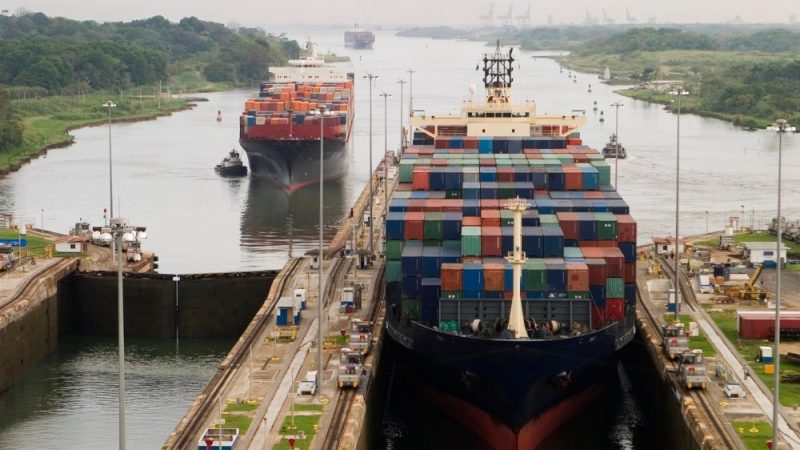A new solution proposed for drought-stricken Panama Canal goes around it

As droughts continue to deplete the Panama Canal’s water levels, the maritime trading hub’s operators are planning a workaround. On Wednesday, Panama officials announced a new Multimodal Dry Canal project that will begin transporting international cargo across a “special customs jurisdiction” near the 110-year-old waterway.
The Panama Canal, which connects Atlantic and Pacific trading routes, has been in dire straits for some time. To function, ocean vessels pass through a series of above-sea-level “locks” filled with freshwater provided by nearby Lake Gatún and Lake Alajuela. Older Panamax locks require about 50 million gallons of freshwater per ship, while a small number of “Neo-Panamax locks” built in 2016 only require around 30 million gallons.
But the canal’s upgrades can’t keep up with climate change’s cascading effects. Lake Gatún and Lake Alajuela are replenished with rainwater, and a lingering drought compounded by El Niño has resulted in the second-driest year in the Panama Canal’s existence. To compensate, the daily average number of ships allowed to pass through the lock system has been reduced from 38 to 27, while each vessel is also now required to carry less cargo. Operators hope to soon raise that average to pre-drought levels, but likely at a cost to local marine ecosystem health and local drinking water supplies. Meanwhile, as the AFP reports, marine traffic jams routinely see over 100 ships waiting to pass through the 50-mile passage.
The new Multimodal Dry Canal project announced this week will attempt to further alleviate a global trade problem that particularly affects the Panama Canal’s most frequent users—the US, China, Japan, and South Korea.
Ship crews shouldn’t need to wait for a yearslong engineering process before seeing some relief to the passage’s congestion. During a presentation of project plans this week, Panamanian representatives said no additional investment or construction is needed. Instead, the dry thoroughfare will function as a complement to the canal by employing “existing roads, railways, port facilities, airports and duty-free zones,” according to the AFP on Wednesday.
Speaking with the BBC earlier this month (before the dry canal’s reveal), a shipping company general manager said such landbased detour routes could be costly—expenses that are “usually passed onto the consumer.”










